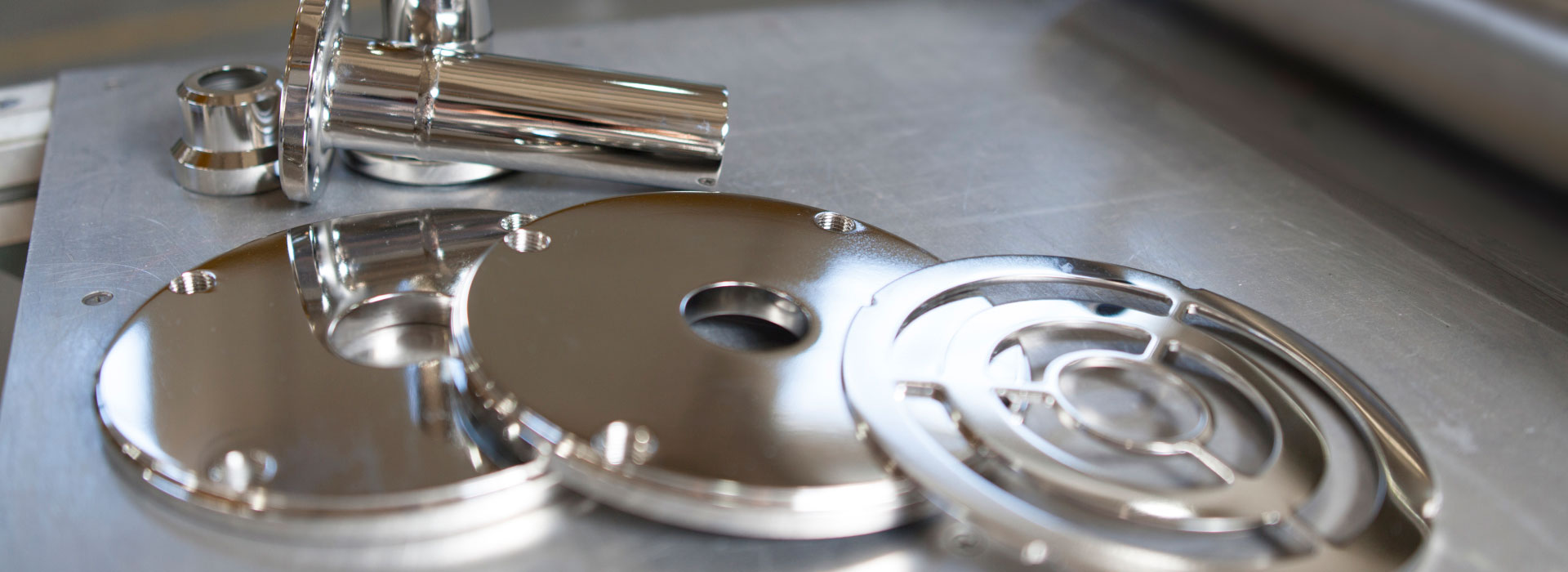Surface finish plays a vital role in the performance of a part, affecting its functionality, durability and aesthetics. This article will introduce the basics of electrochemical machining and polishing, the advantages of using this method for surface polishing, factors affecting surface polishing, common challenges and troubleshooting, and the application of ECM in various industries.
Introduction To Surface Finish
Surface finish refers to the texture, roughness, and overall appearance of a component’s surface. In many industries, such as aerospace, medical, automotive and electronics, a smooth and polished surface finish is required as it improves the performance and functionality of the component. Surface finish affects friction, wear resistance, corrosion resistance and fatigue life of components. Achieving a perfect surface finish requires the use of advanced technologies such as electrochemical machining and polishing.
Electrochemical Machining (ECM):
ECM involves the use of an electrolyte solution and a tool (anode) and workpiece (cathode) connected to a DC power supply. When an electric current passes between the tool and workpiece through the electrolyte, material removal occurs through an electrochemical dissolution process.
The surface finish achieved with ECM is highly dependent on the electrolyte composition, applied voltage, current density, tool geometry, and machining parameters such as feed rate and gap distance. By controlling these parameters, manufacturers can achieve a range of surface finishes from rough to fine.
In ECM, surface roughness typically ranges from Ra 0.1 μm to Ra 10 μm, making it suitable for producing precision components with smooth surfaces. However, achieving mirror-like finishes directly through ECM may be challenging and may require subsequent polishing steps.

Electrochemical Polishing:
Electrochemical polishing is a specialized process used to improve the surface finish of metal parts by selectively removing surface irregularities, scratches, and burrs through electrochemical dissolution.
Unlike traditional mechanical polishing methods, electrochemical polishing can uniformly smooth surfaces, including complex geometries and internal features, without introducing directional patterns or microstructural changes.
The process involves immersing the workpiece in an electrolyte solution and applying a controlled electrical current to the part. As the current passes through the electrolyte, material is dissolved from the surface, resulting in the removal of asperities and the leveling of surface irregularities.
Electrochemical polishing can achieve surface roughness values as low as Ra 0.01 μm, making it ideal for producing high-quality, mirror-like finishes on metal components used in precision applications such as optics, medical devices, and aerospace components.
Advantages of Electrochemical Machining and Polishing In Surface Finish
Electrochemical machining and polishing have several advantages over traditional methods in achieving surface finishes.
First, it is a non-contact process, meaning there is no physical contact between the tool and the workpiece, which reduces the risk of tool wear.
Second, the process can be used to remove material from complex geometries and hard-to-reach areas that are difficult to achieve with traditional methods.
Third, it is a fast and cost-effective process because it removes material quickly, reducing overall processing time and cost.
Factors Affecting Surface Finish In Electrochemical Machining And Polishing
Several factors influence the surface finish achieved through electrochemical machining and polishing. The first factor is the type of electrolyte used, as different electrolytes have different properties that affect surface finish. The second factor is current density, since material removal rate is directly proportional to current density. The third factor is the anode material, because different anode materials have different properties that will affect the surface finish. The fourth factor is processing parameters such as voltage, current, and temperature, as these parameters affect material removal rate and surface finish.
Common challenges and troubleshooting in electrochemical machining and polishing
Electrochemical machining and polishing can be a complex process, and several challenges may arise during the process. One of the most common challenges is maintaining electrolyte flow consistency, as variations in electrolyte flow can affect the surface finish achieved. Another common challenge is maintaining consistent current density, as fluctuations in current density can lead to uneven material removal and surface finish. To address these issues, the process must be closely monitored and adjusted as needed.
Applications of electrochemical machining and polishing in various industries
Electrochemical machining and polishing have applications in a variety of industries, including aerospace, medical, automotive and electronics. In the aerospace industry, ECM is used to manufacture components with complex geometries, such as turbine blades and engine components. In the medical industry, ECM is used to manufacture implants and medical devices with precise dimensions and surface finish. In the automotive industry, ECM is used to manufacture engine components and transmission parts with high precision and surface finish. In the electronics industry, ECM is used to manufacture microelectromechanical systems (MEMS) and other electronic components with high precision and surface finish.
Conclusion
In summary, electrochemical machining and electrochemical polishing are effective methods for achieving precise surface finishes on metal parts. While ECM is primarily used for material removal and shaping, it can produce relatively smooth surface finishes. For finer finishes, electrochemical polishing offers unparalleled control over surface roughness and can produce mirror-like surfaces with exceptional uniformity and consistency.



